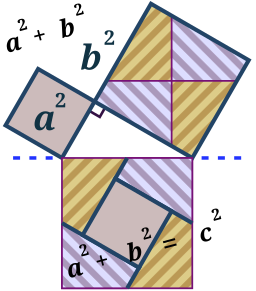As I was listening to the radio today I heard the deejay talk about the special date today and I'll admit it had not occurred to me. However I realized it was the perfect time for some math lessons!! Some dates are special mathematically. Many people enjoy the sequential ones like December 13, 2015 (12/13/14). However there are other special dates. February 4, 2016 is a
special one. When it is written in numbers it is 2-4-16. Can you find the
relationship?
In the equation: 24 = 16, 2 is called the base and
4 is called the exponent. It is read as 2 to the fourth power equals 16.
24
= 2*2*2*2
Exponents help us write larger numbers and smaller numbers in
shorter notations. Can you think of another date in 2016 that will be true by
writing the day as an exponent?
I think it is fun to point these two dates out since they involve the same numbers. It is the only two dates that will have the same numbers in them and work as exponential equations.
However any arithmetic may be used with various dates as well. For example February 14, 2016 could be an addition problem (2 + 14 = 16). Have kids find other dates that work like that. Can they find one each month? Multiplication can also be practiced with the dates. For example February 8, 2016 will work (2 * 8 = 16). Have kids find other ones and see if they can find ones for each month. Ask why or why not.
Since today's date uses exponents it is a great chance to teach about exponents. For kids who just mastered multiplication teach the basic definition of exponents like I illustrated above. Talk about the base and the exponent and what it means. A great extension is to introduce science notation. LearnZillion has a video introducing it and Math Is Fun has a good lesson with examples.
For older students it is a great time to teach the rules of exponents. Rapid Tables has examples and a table of all the rules. Purple Math has good explanations and examples as well.
Other Mathematical Dates
Many mathematicians and teachers celebrate Pi Day on March 14
each year since it is numerically the estimation of the number pi. Pi is approximated to be 3.14. Pi is defined as the circumference of a
circle divided by its diameter. C = pi*D is
often how we think about it. For more on pi and Pi Day read Multicultural History of Pi, Happy Pi Day, and Ways to Celebrate Pi Day.
There are also prime dates like November 13, 2017 (11/13/17). Fibonacci dates (numbers in the Fibonacci Sequence have the pattern that the next number is the sum of the previous two) like August 13, 2021 (8 + 13 = 21). Some people also say that November 23 is Fibonacci Day since its number are the start of the Fibonacci Sequence (1, 1, 2, 3,...). There are also of course the opposite of our exponent dates which are Square Root Dates (April 4, 2016 will be one). There are also Pythagorean Dates where the numbers work in the Pythagorean Theorem:
a2 + b2 = c2
Dates like March 4, 2005 and August 15, 2017 are Pythagorean dates.
 |
| Pythagorean Theorem Illustrated By Baelde (Own work) [CC BY-SA 3.0], via Wikimedia Commons |
For even more mathematical date fun and mathematics days check out my sources!! I hope these ideas will bring a little fun to your math lessons!! I would love to hear what you do with them!!
Smithsonian: After 12/13/15, What Are the Next Fun Dates for Math Lovers
Sources:
Multiplication by Infinity: 14 Math Holidays Every Math Major Should Know AboutSmithsonian: After 12/13/15, What Are the Next Fun Dates for Math Lovers




